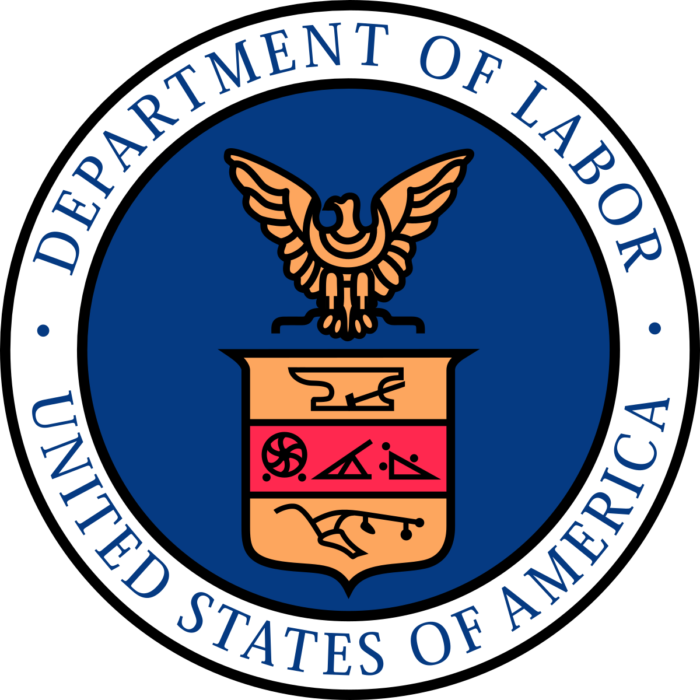January 10, 2020
ShareDOL ANNOUNCES FIRST SIGNIFICANT UPDATE TO FLSA IN 50 YEARS
By: Angelo Filippi, Esq.
 The U.S. Department of Labor published a Final Rule[1] on December 16, 2019 that will affect the forms of Compensation employers may include or exclude in the calculation of an employee’s overtime rate or “time and one-half.”[2] The final rule will take effect on January 15, 2020.
The U.S. Department of Labor published a Final Rule[1] on December 16, 2019 that will affect the forms of Compensation employers may include or exclude in the calculation of an employee’s overtime rate or “time and one-half.”[2] The final rule will take effect on January 15, 2020.
In 1948, the Supreme Court in Bay Ridge Operating Co. v. Aaron, discussed whether certain types of compensation can be excluded from the regular rate of pay and whether it can be credited towards overtime payments.[3] It found that the regular rate of pay, by its very nature, must reflect all payments which the parties have agreed shall be received regularly during the workweek, exclusive of overtime payments.[4] However, “To permit overtime premium to enter into the computation of the regular rate would be to allow overtime premium on overtime premium—a pyramiding that Congress could not have intended.”[5] In 1949, Congress amended the FLSA and defined “regular rate” to include all remuneration for employment paid to, or on behalf of, the employee, with the exception of an exhaustive list of seven specific categories of payments that could be excluded from the regular rate.[6]
What is “rate of pay” and “overtime wages” in non-legalese? The regular rate is essentially the wage rate per hour, which is subject to exclusions.[7] The FLSA does not require employers to pay solely on an hourly rate basis. For example, an employee may be paid via commission, salary or piece rate. Regardless how the employee is paid, the calculation of the hourly rate of pay is determined by dividing the total compensation given to the employee in a workweek, by the total number of hours in said week. The FLSA requires payment of overtime wages or “one and one-half times” the employee’s regular rate of pay, for the hours worked in excess of forty (40) hours in a workweek to covered, non-exempt employees.
What happens when an employee is awarded for being an efficient employee and producing quality work in respect to the calculation of overtime wages? Would those perks or awards be included in the regular rate of pay and included in the calculation of overtime wages?
A regular rate of pay calculation would include a non-discretionary bonus provided to an employee based on certain employment criteria; for instance, awards for cooperation, courtesy, efficiency, highest production, best attendance, best quality and highest number of overtime hours worked. There are two types of awards that may be presented to this stellar employee. If the award is paid in cash, the amount is allocated over the period during which it was earned to determine the increase in the average hourly rate for each work week of the period. If the award extended is merchandise, the cost to the employer is the sum which must be allocated. If the employee has the discretion to choose whether he would like an award that is cash or merchandise, the amount to be allocated is the amount/cost of the actual award he accepts.
Which perks can an employer provide without including them in the regular rate of pay and without risk of additional overtime liability? The following are perks that may be provided to an employee without including them in the regular rate of pay and without running overtime liability risk (this list is not exhaustive):
- Certain parking benefits[8]
- Onsite specialist treatment[9]
- Recreational (i.e., gym access, fitness classes, wellness programs)[10]
- Payment for unused leave (including PTO or paid sick leave). [11]
- Reimbursement expenses; such as, cell phone plans, organization membership dues, travel and certain exam fees. It defines per se “reasonable payments,” as not exceeding the maximum travel reimbursement under the Federal Travel Regulation System or the optional IRS substantiation amounts. Additionally, reimbursed expenses need not be incurred “solely” for the employer’s benefit for the reimbursements to be excludable from an employee’s regular rate.[12]
- Certain sign-on bonuses and certain longevity bonuses[13]
- Certain discretionary bonuses[14]
- Office coffee and snacks
- Bona fide meal periods[15]
- Call back pay (must be “infrequent and sporadic” to be excludable from an employee’s regular rate, while maintaining that such payments must not be prearranged)[16]
- Contributions to benefit plans to provide systematically for the payment of benefits to employees on account of death, disability, advanced age, retirement, illness, medical expenses, hospitalization, and the like.[17]
Additionally, the Department of Labor increased from $0.50 to a weekly amount equivalent of 40 percent of the applicable hourly minimum wage under the FLSA (currently $2.90, or 40 percent of $7.25 or the state or local law applicable in the jurisdiction in which the employee is employed, whichever is higher), the amount by which total compensation would not be affected by the exclusion of certain additional payments when using the “basic rate” to compute overtime provided by § 548.3(e).[18]
Employers should identify which employees are affected by the final order and make the appropriate adjustments.
DISCLAIMER: THIS ARTICLE DOES NOT CONSTITUTE LEGAL ADVICE. PLEASE CONTACT KELLEY KRONENBERG FOR LEGAL ADVICE.
[1] The final rule is considered an Executive Order (E.O.) 13771 deregulatory action.
[2] 29 CFR § 778.331.
[3] Bay Ridge Operating Co. v. Aaron, 334 U.S. 446, 459-477, 68 S.Ct. 1186, 92 L.Ed. 1502 (1948)(held “straight time” rate provided for by the agreement does not constitute the “regular rate”, which FLSA requires to be used in computing the statutory minimum payment (“not less than one and one-half times the regular rate”).
[4] Id. at 461.
[5] Id. at 464.
[6] 29 U.S.C. 207(e).
[7] The FLSA defines the regular rate as “all remuneration for employment paid to, or on behalf of, the employee”—subject to eight exclusions established in section 7(e). See 29 U.S.C. 207(e).
[8] 29 CFR § 778.224.
[9] 29 CFR § 778.224(b)(3).
[10] 29 CFR § 778.224.
[11] 29 CFR § 778.219.
[12] 29 CFR § 778.217.
[13] § 778.212.
[14] § 778.211.
[15] §§ 778.218(b) and 778.320.
[16] §§ 778.221 and 778.222.
[17] 29 CFR § 778.215(a)(2).
[18] Department of Labor, (December 16, 2019) https://www.federalregister.gov/documents/2019/12/16/2019-26447/regular-rate-under-the-fair-labor-standards-act#citation-49-p68739; 29 U.S.C. 207(g).


